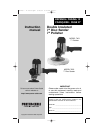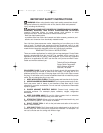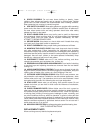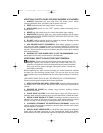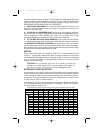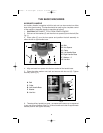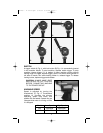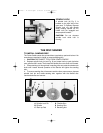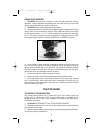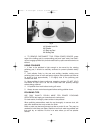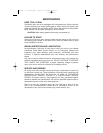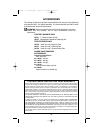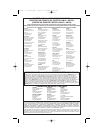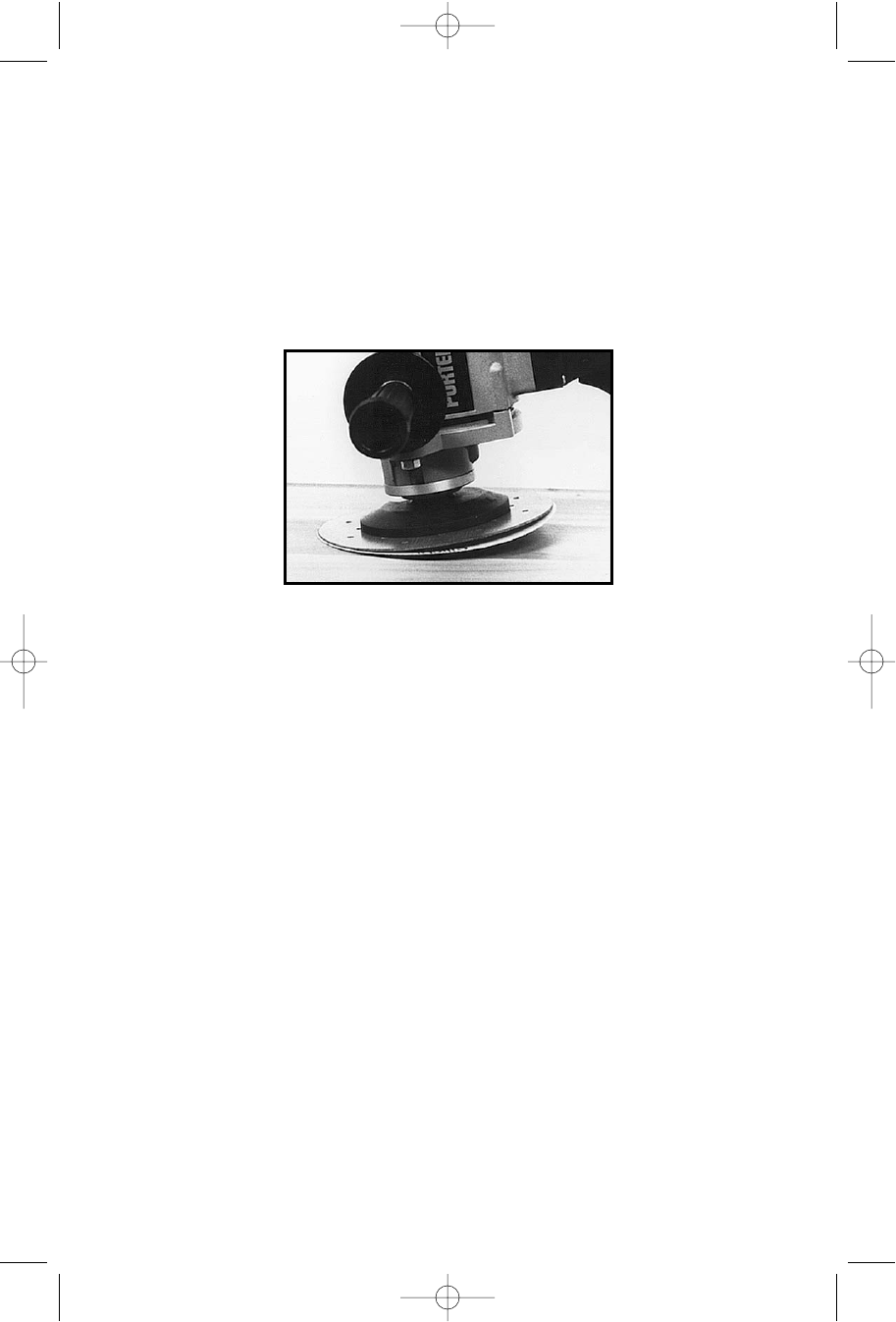
9
USING DISC SANDER
1. CAUTION: Secure work to prevent it from moving during the sanding
operation. Friction between the sanding disc and work will try to spin work
away from sander and may cause bodily injury.
2. CAUTION: Wear safety glasses and dust mask.
3. Hold sander firmly by the rear and auxiliary handles, making sure sanding
disc is clear of work and foreign objects. Start sander and lower at an angle
so that approximately 1" to 1
1
/4" of the sanding disc contacts the work (see
Fig. 7). Too great an angle may result in gouging or snagging the work, while
too small an angle results in extreme difficulties in controlling the sander.
Fig. 7
4. Move sander in long sweeping overlapping strokes as you go back and
forth. Do not move sander in a circular motion or stay in one spot too long as
this will produce swirls and an uneven finish. The weight of the sander applies
sufficient pressure for fast stock removal. Additional pressure will only slow
the sander down and decrease removal of stock.
5. Lift sander from work before turning off motor.
6. Always be sure motor has stopped before setting sander down.
7. For rough sanding and quick stock removal, use a coarse grit sanding
disc. For a fine finish, use a medium grit disc, followed by a fine grit disc. Do
not go directly from a coarse grit to a fine grit, as it is difficult to remove marks
left by the coarse grit disc.
THE POLISHER
TO INSTALL POLISHING PAD
The Porter-Cable Polisher has a “Hook and Loop” style back-up pad and
buffing pad. A “Hook and Loop” compounding pad is available as an
accessory (see list in back of this manual). No wrenches are required for
installation or removal.
1. CAUTION: DISCONNECT TOOL FROM POWER SOURCE.
2. Depress spindle lock pin (see Fig. 8) and rotate back-up pad clockwise
onto spindle until it seats.
3. Align the buffing pad (or the accessory compounding pad) with the back-
up pad and press in place firmly.
892459 - 11-30-00.QXD 2/25/02 8:23 AM Page 9



